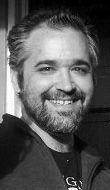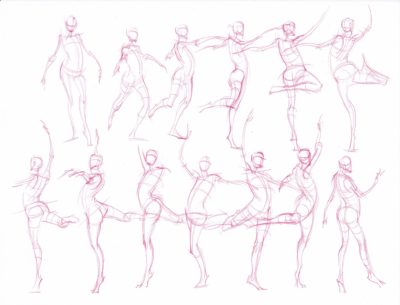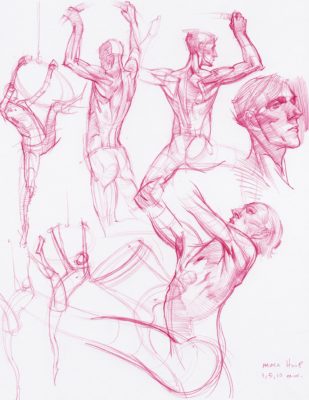ARTIST SPOTLIGHT
Bodies in Motion would like to introduce you to Michael Hampton, an amazingly talented artist and educator who has been doing great work with the Bodies in Motion library. We had a few minutes to catch up with Michael about his art, process, and inspirations.
Q&A with Michael Hampton
 Q: When did you decide you wanted to be an artist?
Q: When did you decide you wanted to be an artist?
I was interested in the arts from a pretty young age. Like many, my first artistic love was comics and I spent hundreds of hours copying everything I could. I started studying more seriously in my early 20’s.
Q: Did you study art formally or are you self taught? or a combination?
Yes, all of the above. I started my formal education in 1998-99 and haven’t stopped since. I have formal degrees in Illustration, Fine Art, and am currently completing a PhD in Art History. I love learning about the arts, and always do my best to keep involved in continuing education. While I think all education is to a certain extent digested or internalized in ways that are self directed, I have benefited enormously from amazing teachers and classes throughout the years. As it relates to studying the figure, Glen Vilppu and John Watkiss have been huge influences on the way I approach drawing, while both Andrew Cawrse and Scott Eaton have been invaluable as teachers of anatomy.
Q: Who would you consider your biggest artistic influences?
Too many to list of course. However, one constant throughout the years has been Jerome Witkin. For me, there is no more technically impressive painter/draughtsman who also manages to work within a tradition of “realism.” I have always loved and admired realist practices in the vein of Courbet or Manet for the ways they make difficult the work of representation while staying grounded in a materialist approach to the world.
Q: Do you have a daily drawing routine?
Much of my drawing routine is driven by my teaching schedule. Demoing, in-class drawing, or lecturing keeps me regularly practiced and drawing at least 3-4 hours a day. On non-teaching days I work best in the morning so usually sketch over coffee.
Q: What’s your setup – digital or traditional (pencil/paper, wacom, ipad pro, surface pro, etc)?
I would almost always prefer to work traditional (pen, prismacolor mostly), but do enjoy working digitally as well. I use an old Intuos 3, Surface Pro, and a Cintiq.
Q: What advice would you give to artists wanting to improve their figure drawing skills?
I think it’s important to have a plan or regular approach. Even if it’s one that you don’t stay committed to forever, it’s empowering to have a plan of attack that also allows for the division of labor. Tackling one thing at a time, while also breaking up separate competencies or skills, makes it easier to manage problem areas while diagnosing where more time needs to be dedicated, etc. I’m also a firm believer in repetition.
Q: You’ve been posting great work here, what do you enjoy most about Bodies in Motion?
Quite a bit actually. I love the degree of curation involved in each sequence, from the lighting, to angles, variations on body types, activities, etc. In addition to the motions, my favorite aspects thus far are the timer, multi-cam, and ability to zoom in to such high resolution images. This is a near impossible thing to mimic when drawing from life and allows me to understand or troubleshoot a pose from multiple angles or up close.
Q: Where can people find out more about you and your work?
My figure drawings can be found at http://www.figuredrawing.info/. For more info please feel free to email me at info@figuredrawing.info.
 Thanks Michael for the background and inspiration! If you want to learn more about gestural figure drawing we thoroughly recommend Michael’s book – Figure Drawing: Design and Invention. That book, plus Bodies in Motion reference, is a great recipe for drawing progress.
Thanks Michael for the background and inspiration! If you want to learn more about gestural figure drawing we thoroughly recommend Michael’s book – Figure Drawing: Design and Invention. That book, plus Bodies in Motion reference, is a great recipe for drawing progress.
A small selection of his studies below but you can find his complete collection of Bodies in Motion studies here, each with links back to the Motions he referenced. Keep drawing!








